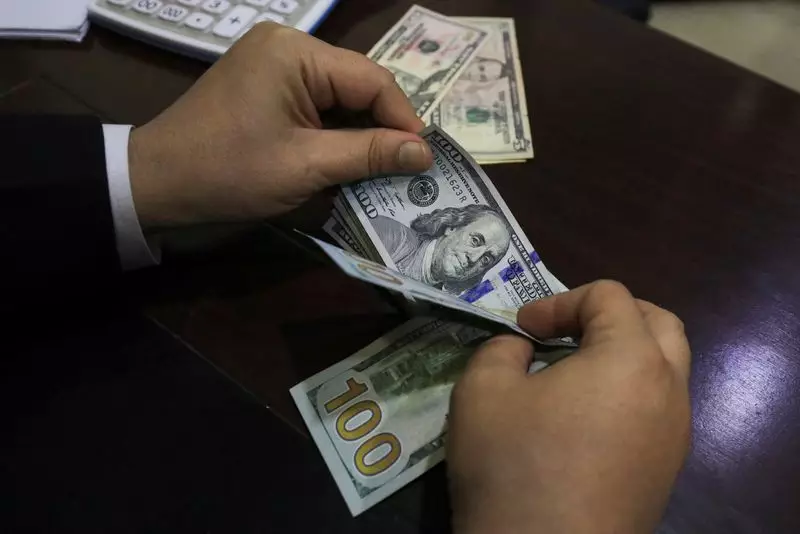The current state of the foreign exchange market sees the dollar gaining momentum, while the Japanese yen remains at a multi-decade low. The threat of Japanese authorities intervening to stabilize the yen has prevented the greenback from soaring even higher. At the time of writing, the yen is trading at 151.25 per dollar, not far from its 32-year low of 152 per dollar. This significant dip is a cause for concern for Japanese officials, who have been vocal about their dissatisfaction with the currency’s depreciation.
Japanese officials have been resorting to verbal intervention to address the weakening yen, underlining that the current levels do not align with fundamental economic factors. The heightened rhetoric from government authorities, coupled with the fear of actual foreign exchange intervention, has created a strong resistance level at 152 for the dollar/yen pair. Traders and analysts are closely monitoring the situation, anticipating potential interventions if the dollar were to surge significantly, possibly reaching 155.
Global Rate Outlook Impact
The shift in the global interest rate outlook has provided support for the dollar, as the Federal Reserve is expected to maintain higher rates compared to other central banks. Speculations of rate cuts by the European Central Bank and the Bank of England, following the Swiss National Bank’s lead, have put pressure on the euro and sterling. Amidst uncertainties about the timing of rate cuts, market participants are closely watching for signals from these central banks.
Market Expectations and Central Bank Actions
While market expectations suggest a potential easing cycle by the Federal Reserve in June, resilient economic data from the U.S. has cast doubts on the extent of rate cuts. The dollar index has seen a slight increase, reflecting overall confidence in the U.S. economy. Meanwhile, the Australian and New Zealand dollars have faced downward pressure, linked to the weakening Chinese yuan. Market participants are closely monitoring the yuan’s movements, especially with concerns about further monetary easing in China.
The recent weakness in the Chinese yuan has had a ripple effect on other Asian currencies like the Australian and New Zealand dollars. Both currencies are often used as proxies for the yuan, leading to downward pressure when the Chinese currency depreciates. Despite efforts by Chinese state-owned banks to stabilize the yuan, market expectations of additional monetary easing have weighed on the currency. The offshore yuan remains a key player in the foreign exchange market, impacting trading activities in the region.
Ultimately, the foreign exchange market remains a complex and interconnected system, influenced by a multitude of factors ranging from central bank policies to economic data releases. As Japanese authorities closely monitor the yen’s movements and global interest rate trends continue to evolve, market participants must stay vigilant and adapt to changing conditions in order to make informed trading decisions.

